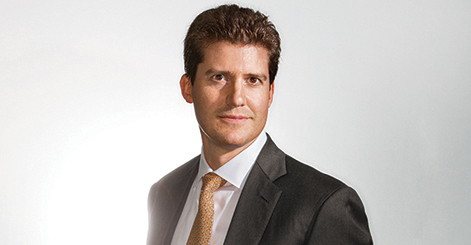As lead counsel for the Federal Housing Finance Agency in its landmark RMBS litigation against major Wall Street banks, including Bank of America, JPMorgan, Deutsche Bank, and others, Philippe Selendy and his team at Quinn Emanuel have settled twelve cases and recovered more than $16 billion in cash payments for the American taxpayer. The huge and highly publicized wins cap a long string of successes in complex financial litigation for Selendy, a 1993 Harvard Law graduate, and the firm.
Lawdragon: You’ve made a name for yourself in these highly complex cases involving some of the most sophisticated financial products such as RMBS-related litigation. How did you educate yourself the first time?
Philippe Selendy: What I like about these cases is the interplay of litigation strategy, theory and mathematics, transaction structures, and economics. For me, the RMBS cases had key antecedents in CDO cases and a string of prior financial cases, going back to an accrual-swap case I handled nearly twenty years ago. It is a continual process of education. Acronyms aside, however, the nature of this litigation is not fundamentally different from other complex litigation: once you learn the language and the field, it all turns on the classic litigator’s art.
LD: As you handle more of these cases, have you developed an approach to litigating them or is each unique?
PS: We do have internal best practices to litigate common types of structured finance cases. These include deep pre-suit due diligence into facts and claims, statistical or model-driven testing of wrongdoing by defendants, close collaboration with clients to understand products and markets, and a deliberate investment into specialized transaction expertise by our generalist litigators. But each case ultimately has to be assessed on its own, and our final strategy will be highly case-specific. As a trial firm, we also build our cases from inception with the object of reaching trial on the merits; among other virtues, this tends to maximize settlement leverage.
LD: Several litigation firms have really tried to mine this niche of being able to litigate against banks and yet Quinn Emmanuel appears to have truly cornered this market. How do you manage to keep getting major cases against big banks and how did you land the lead counsel role in the FHFA cases?
PS: Our approach is perhaps uniquely aligned with that of the institutional investors who drive this litigation. We regard potential litigation claims as assets that should be developed like other assets, with long-duration risk-optimized strategies that consider relative costs and benefits at every step. We are committed to handling cases through trial, and, if requested, to risking our own firm capital along the way. As for FHFA, we proposed a promising litigation path that I believe resonated with FHFA’s core mission to conserve the assets of Fannie Mae and Freddie Mac for American taxpayers.
LD: What’s the biggest challenge litigating against the world’s largest financial institutions?
PS: The defendants’ inexhaustible resources, acting over time to pressure both Congress and the courts, have gradually reshaped both substantive and procedural law to create roadblocks against private civil actions, even for clearly meritorious claims. Regulators can be overwhelmed; the financial products and related issues of disclosure and valuation can be very complex; and there are definite asymmetries of access to information that hinder claims development. The greatest challenge is simply to ensure that there is a level playing field.
LD: Are we at all near the end of the litigation wave brought on by the financial crisis? Where do you see areas of growth in the litigation market?
PS: If transparency of information and the integrity of financial institutions are essential to stable markets, then we know that both volatility and litigation are here for the foreseeable future. I do not believe that the structural flaws giving rise to the latest financial crisis have been remedied, or that sufficient resources have been allocated to our regulators. At a macro-level, therefore, I expect to see further private litigation in areas where there are concentrations of capital, transactional or structural complexity, and problems with access to data.
LD: When you were in law school did you think you’d be focusing in this area? Or did you have something else in mind?
PS: I had hoped to develop tools and talents that would allow a pragmatic pursuit of worthwhile ends, knowing it can be hard to put ideals into practice. The FHFA cases have presented a very happy combination of public good and private practice, and I am looking for others.
LD: What’s the best advice you’ve ever received from a fellow lawyer?
PS: Do what you love.


